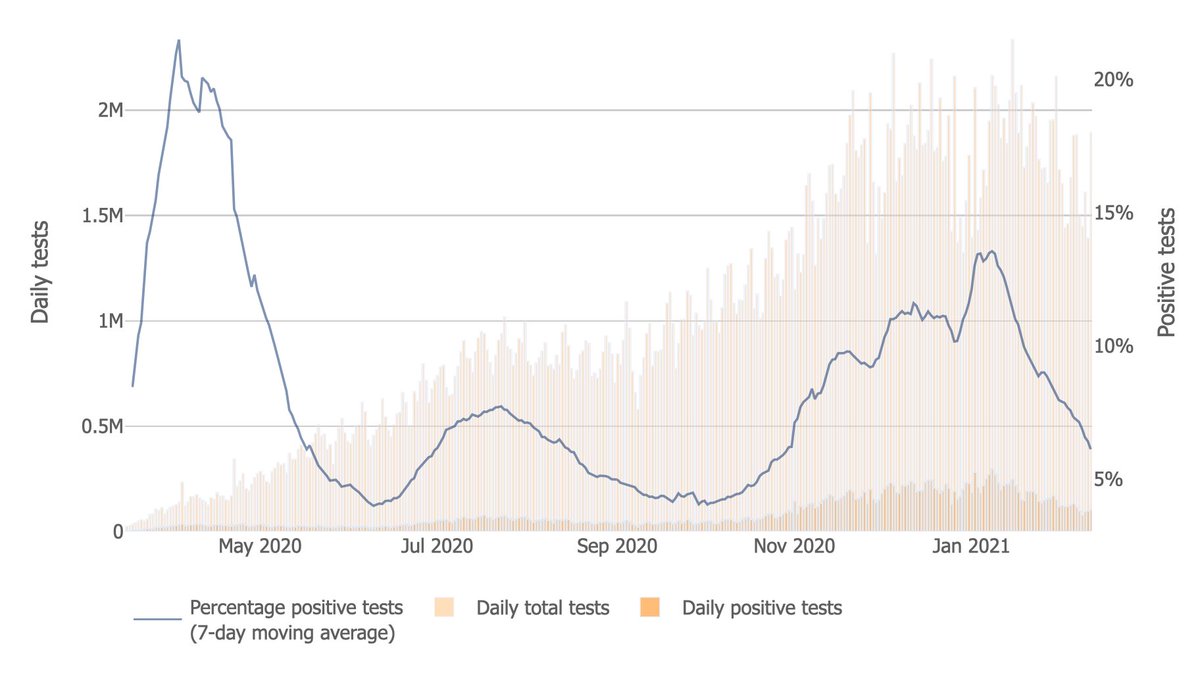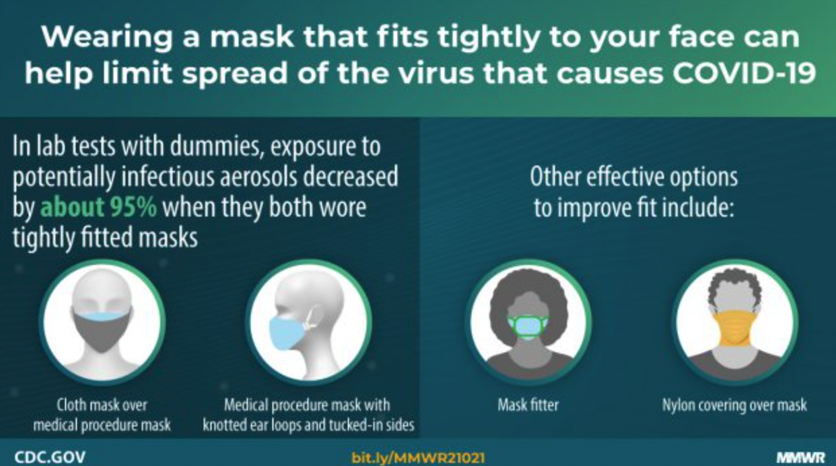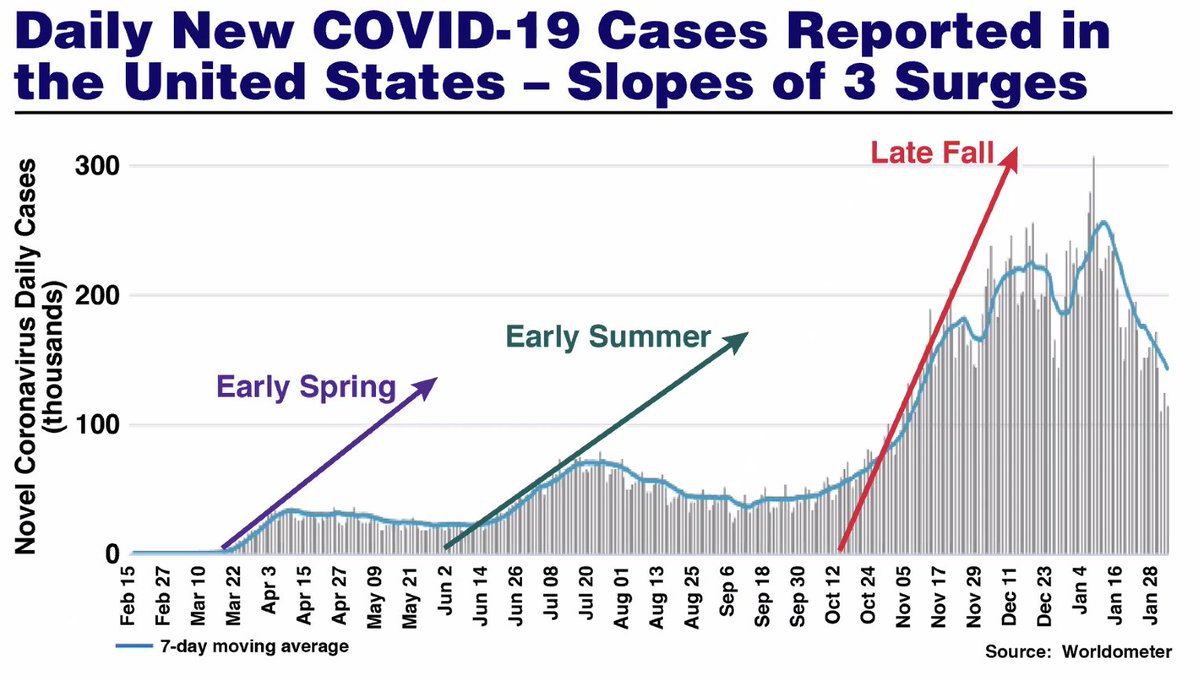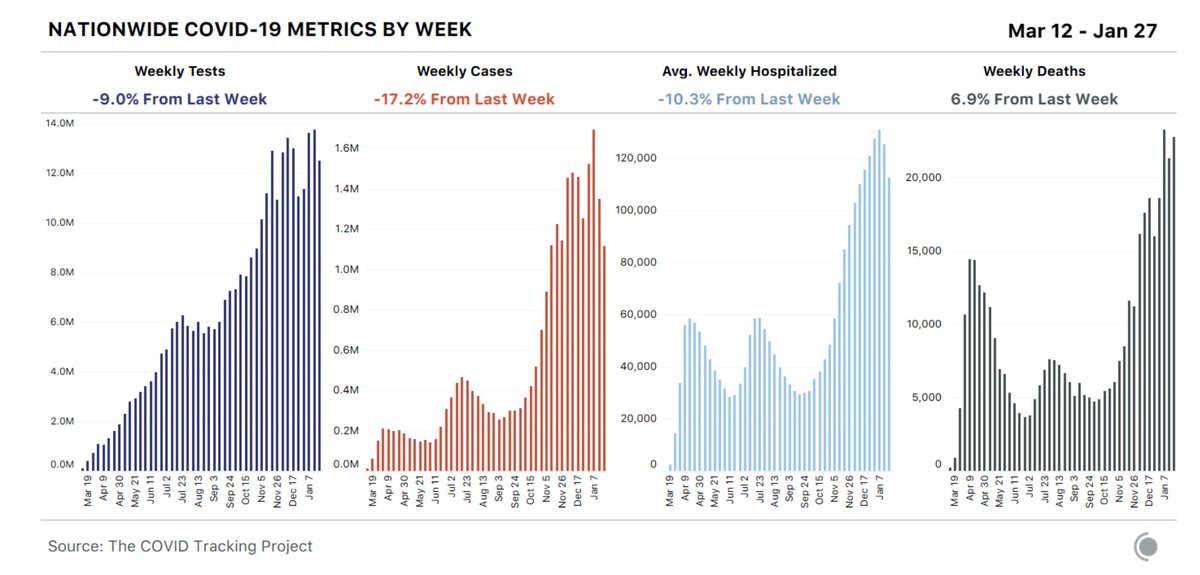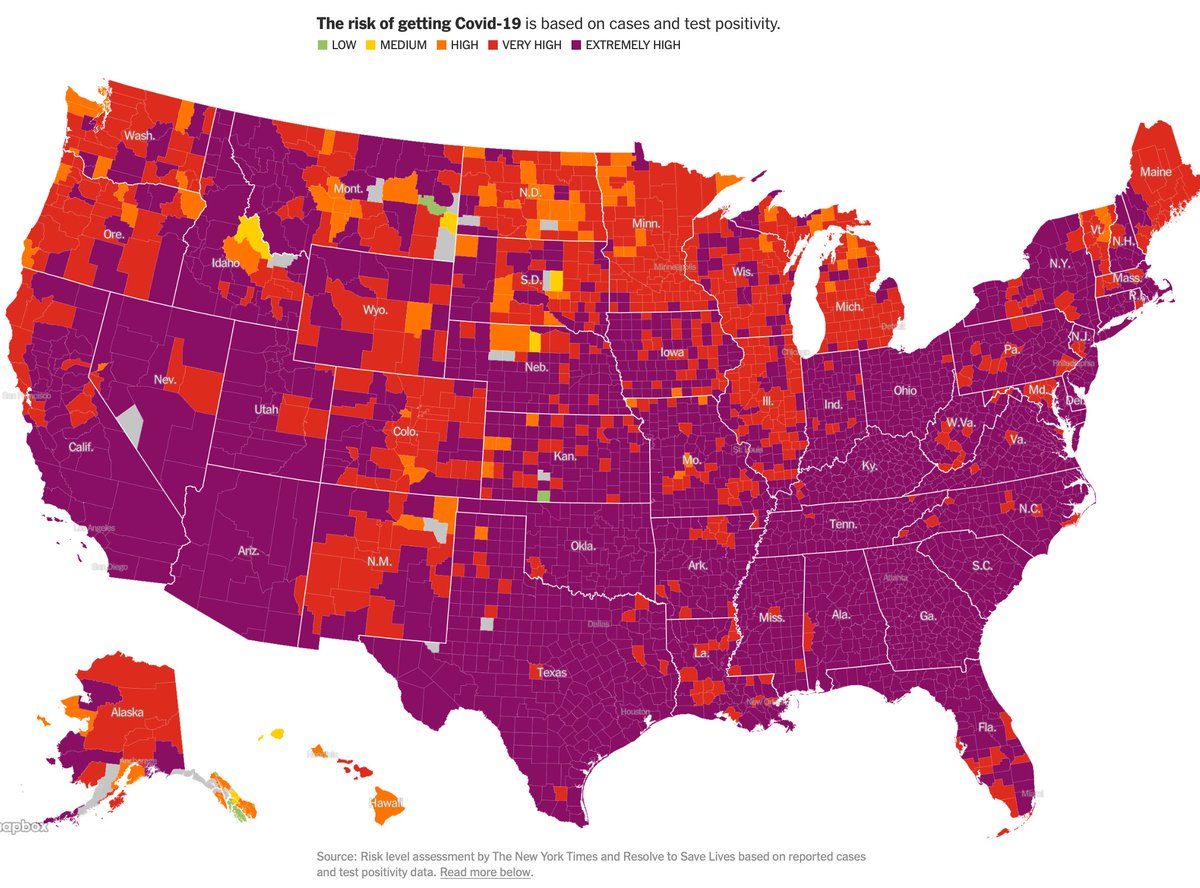
Covid Epi Weekly: The End is Near! But Not for the World.
Steady good news in the US: Decreasing cases, hospitalizations, and deaths, and increasing vaccination pace.
Serious risks: Variants, vaccine inequity, and failure to learn the lessons of Covid.
1/
Steady good news in the US: Decreasing cases, hospitalizations, and deaths, and increasing vaccination pace.
Serious risks: Variants, vaccine inequity, and failure to learn the lessons of Covid.
1/

The good news first. US cases decreased 75% from the peak, with hospitalizations and deaths following. Vaccination (after a weather-related disruption) is increasing, and much more supply is on the way. In June, anyone in US over 16 who wants a vaccine will be able to get one. 2/ 

Vaccinations are already saving lives! Progress in nursing homes; expect larger reductions of nursing home deaths in the coming weeks as vaccine-induced immunity kicks in. As predicted, the risk of death from Covid among all those infected will fall by at least two thirds. 3/ 

Will vaccination make Covid no deadlier than flu? Problem with that question: First, with high infectivity and moderate case fatality, Covid would would still be like a severe flu. And, flu is the Rodney Dangerfield of infectious diseases – doesn’t get the respect it deserves. 4/ 

Every year in US flu causes tens of thousands of deaths, hundreds of thousands of hospitalizations, and billions of dollars in health care and economic costs, much of which could be prevented. Flu vaccination works, but not very well. Masks and distancing crush the flu curve. 5/
Now, the bad news. Worst news of past month: data from Novavax trial in South Africa suggesting prior infection might not prevent reinfection with B1351 variant. But the validity of antibody tests used in that trial uncertain - so jury is still out. bit.ly/3uzik6B 6/
Hey, Twitter-sphere, chill. Attacks from all sides. Bottom line: Variants DEFINITELY a risk and we also DEFINITELY don’t know how big a risk. Better safe than sorry. Better recognize people (including politicians) may choose to take risks. Problem: Taking risks w others' lives.7/
Why do variants spread? Sometimes they’re more fit. But sometimes it’s “stochastic” – fancy word for happenstance. Superspreader event. Founder effect. Bad luck (or good luck, if you look at it from the virus’ standpoint). More common doesn’t necessarily mean more infectious. 8/
Two puzzlers this week
Why US cases dropping SO fast?
Why NYC cases not dropping nearly as fast?
See arrows: US cases dropping faster in Surge 3 than Surges 1, 2.
Because peak was higher, driven by travel and holidays now over, masking up, and rational national policy? Maybe. 9/
Why US cases dropping SO fast?
Why NYC cases not dropping nearly as fast?
See arrows: US cases dropping faster in Surge 3 than Surges 1, 2.
Because peak was higher, driven by travel and holidays now over, masking up, and rational national policy? Maybe. 9/

Imagine you’re a virus attacking 330 million people. 100 million have natural defenses from prior attack. 10 million vaccinated/wk. Places to land shrinking. ‘Herd immunity’ another false dichotomy. Steeper slope likely in part from increasing immunity. nyti.ms/2MAijyg 10
(For those wondering about 100 million number: That’s number of people infected in US so far. Simplest to estimate from deaths to infections: ~1:200. So 500,000 deaths ~ 100 million infections. Not all will result in immunity, and we don’t know how long immunity will last.) 11/
But biggest driver of decrease is us: masking, distancing, reducing travel. Odds of large 4th surge falling steadily. Please keep up your masks, distance, and perspective: 2,000 deaths/day is horrifying. In a few more months, if we keep it up, we’ll be in much better shape. 12/
I remain puzzled about NYC. Decline is real but much slower than national decline. Baseline infection rate higher, so can’t be because of less immunity – there’s more. Variants are one theory but at this point just that – a theory. Time will tell, for better or for worse. 13/ 

So much still unknown about long Covid. Takes many people a long time to improve even from relatively mild Covid. Some people suffering for many months. Important that NIH lead systematic studies so we can learn more and, more importantly, do more to help those struggling. 14/
After variants, the second big risk is inequity, both in the US and globally. Anywhere the virus spreads, more dangerous variants can emerge and threaten health everywhere. We need to scale up control measures, including vaccination, everywhere. pandem-ic.com 15/ 

Third big risk is that we fail to learn lessons Covid is teaching. We need new funds for preparedness ($5-10B/year) and for primary care. Stronger WHO and other global institutions. More technical collaboration. Better management. Immunization of public health from politics. 16/
When will it be safe to go out again? This summer the US will be much safer. Will we learn to cluster bust, stopping spread promptly even tho Covid won’t be so lethal since most vulnerable people vaccinated? Will variants evade our defenses? Will we help the world stop Covid? 17/
Answers to these questions will determine how much normality we get back and how soon. Often in public health, the right answer to hard questions is, “It depends.” In this case, it depends on us. Can we strengthen test/trace/isolate? Scale up vaccine supply globally? 18/
Last week US reported 2,000 deaths per day. PER DAY! For past 3 months Covid killed more people in rich countries than leading cause of death: cardiovascular disease. At Resolve, CVD is a primary focus. I summarized some of our work in past year here: bit.ly/2ZW9Vfm 19/ 

Covid isn’t over. No idea what upticks below mean and whether will persist. Again, time will tell. Keep perspective. A lot better still doesn’t mean good. Covid remains rampant. Global control essential. “Nationalism is an infantile disease - the measles of mankind” -Einstein 20/ 

“Not everything that is faced can be changed; but nothing can be changed until it is faced.” -James Baldwin
21/End
21/End
• • •
Missing some Tweet in this thread? You can try to
force a refresh





